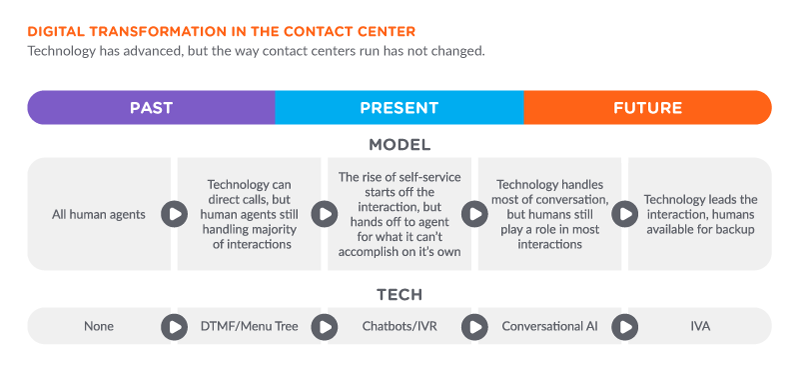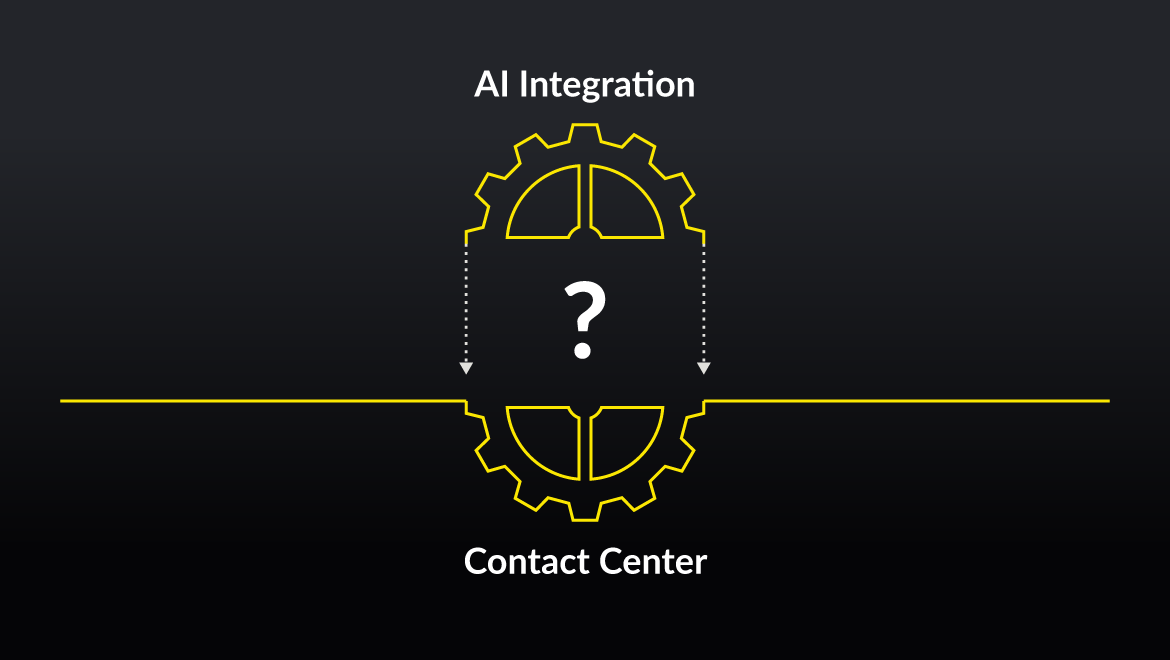The Age of AI is upon us – seemingly everywhere at once, especially when it comes to generative AI. And with such swift change, a number of questions arise: How should organizations shift their customer service strategy? What does it mean for contact centers, which are part of a $500-billion-a-year marketplace that’s expected to grow to nearly $750 billion by 2030?
What is the best use of AI and automation in call centers? How can call centers remain customer-centric while using AI? Is the human touch in customer service a thing of the past?
James Wood, EVP of Platform & Applications at Interactions, examines the impact of AI on customer service, its effect on CX and call center revenue, and how it’s shaping the future of work in contact centers.
Generative AI & the Contact Center
Q: Generative AI has the power to transform how we do business. How should it be utilized in contact centers?
JW: Generative AI can be a great asset for contact centers. It can offer tremendous benefits (below) and a level of sophistication that’s critical when you’re at the escalation point. But it’s equally important that this technology is applied carefully. A negative experience at a critical point can have severe implications for your relationship with the customer.
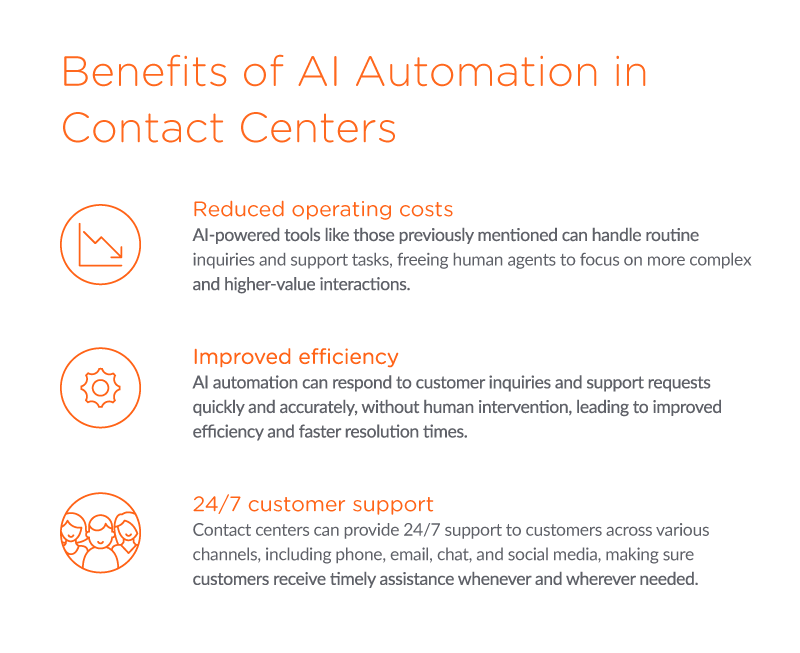
Q: How should Generative AI integrate with existing contact-center automation and impact the customer experience?
JW: First, think about Conversational AI more broadly, not just Generative AI. At Interactions, we deliver nearly 500 million engagements a year using Conversational AI and Human-Assisted Understanding (HAU). It’s an understatement to say we are experts.
It works like this: Every customer service voice call starts with an automated attendant asking, “How can I help you?” Our automated attendant understands natural language. It can process a customer’s query in a fast, frictionless manner. We have greater than 97% accuracy in understanding the customer’s intent.
But sometimes a friction point arises in that automated experience. When that happens, a human assistant is sent, in real time, a clip of what was just uttered. That human has the ability to understand the customer’s intent and moves the conversation forward without interruption. For the customer, the processing is invisible. All she knows is that her issue was solved flawlessly.
What I just described is based on AI. It’s a process-oriented flow with a set of specific options and a journey toward customer resolution. This process flow allows the AI to not just generate content and conversation, but apply business process, and interact with data systems to actually take actions, like solving problems, taking orders, or booking flights. These processes and systems are the same that might be used by human agents.
Now with Generative AI, we will begin to see AI increasingly respond to customer needs by producing dynamic content. For example, Generative AI can be trained on a customer’s Knowledge Base (KB) and provide specific solutions for specific problems. This is advantageous because it’s fast, smart, scalable, and always available.
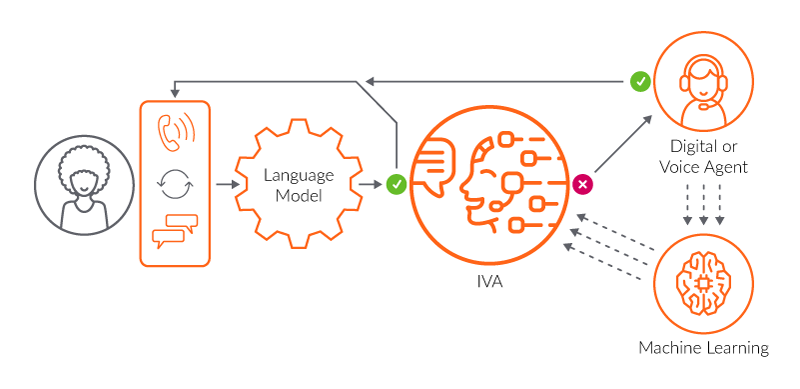
Q: Is Generative AI an improvement over more process-oriented AI?
JW: It’s important to understand that Generative AI is less deterministic than the more process-oriented flow created by Interactions.
When you are contacting customer support, you generally know what you want to accomplish. Let’s say you are returning an item. You go through the workflow, answer the questions, accomplish your goal, and move on. You may benefit from Generative AI to answer questions, but you don’t need it to get resolution.
In years ahead, a blend of different AI approaches will likely become the modus of the contact center. At Interactions, we see a bright future of opportunity for this technology. But we also deeply believe you will benefit from human interaction in certain circumstances – usually the most critical ones.
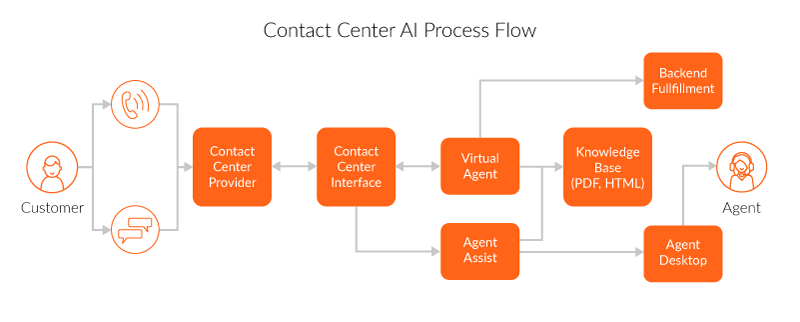
The Importance of Humans
Q: How essential are humans for brand interactions, or has automation become more prevalent?
JW: Today, a good deal of the interaction a customer has with a brand doesn’t involve humans at all, nor does it involve AI. The vast majority of today’s CX interactions are with automated processes, and they are quite effective. But human contact still has a vital place. Especially when it comes to escalation points or friction points in a customer-service experience, the quality of human contact matters a lot. For many brands, the human touch is the essential connection that drives long-term customer relationships.
The frustration with customer service is real. When do you start pressing 0 and yelling for the agent? Our studies show that people do it after 1.5 to 3 utterances. We did a recent survey showing nearly one-third of customers swore at robots or humans in the last year.
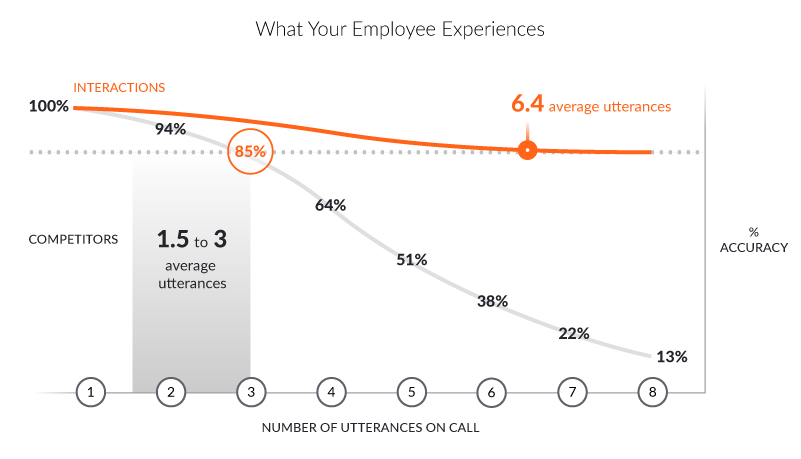
Q. How can companies foster a culture of customer centricity and human connection in customer service, especially in a digital environment with integrated AI?
JW: You must think very carefully about how you apply automation to your customer contact systems to make sure customers still feel emotionally attached to your brand — that they’re having a good experience and are getting what they need. You want to avoid the frustration I just mentioned. This requires a solution that combines human capital with technology.
Your digital strategy goal shouldn’t be deflecting customers from talking to humans, but to help them efficiently get things done. It’s a philosophical position you need to establish when developing digital customer service solutions that incorporate AI. Are you trying to make it easier to solve problems? Or are you trying to keep customers from talking to agents? It’s a fine distinction, but it really makes a difference in terms of how it comes across and the sort of customer experiences you create.
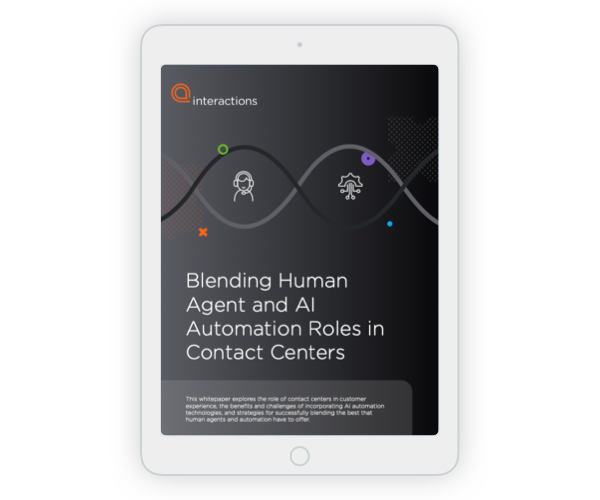
Q. Can you share examples of organizations that have successfully integrated human customer service with digital technologies? What lessons can be learned from those examples?
JW: The real trick to building good digital customer services is to make sure your digital assistant strategy reflects your brand and provides the experience your customers expect. For example, we were working with an insurance company to provide an AI intelligent virtual assistant (IVA), so we were looking at call types, such as paying a premium. It’s a good thing to automate, right? It’s a conversation where the structure is well understood by the customer. They’re comfortable with how to do it.
But insurance companies also get calls that are really personal, emotional situations, like people claiming life insurance policies or dealing with accidents with injuries. It’s important to build your AI to be compassionate and to understand that there are times where the appropriate thing to do is have a human conversation. Building a solution that meets people where they’re at and makes appropriate decisions, like escalating a sensitive call, is an important part of an automation strategy.

Challenges and Opportunities of AI in Customer Service
Q: Looking ahead, what opportunities or challenges does this intersection of human customer service and digital technologies present for organizations?
JW: To me the real opportunity is in new ways of blending live human thought and technology. For the longest time, customer service was purely human. Then we had automation, but moving a customer to a human interaction, the automation couldn’t continue. Increasingly, what you have are use cases where you’re trying to apply the value of human interaction within a context that’s being digitally managed.
So a lot of the really cool things you see coming are about increasing how you can apply automation while leaving the ability to inject human intelligence. This is where we’ve broken a lot of ground at Interactions. It’s both cost-efficient but also experience-centric.
Q: What will the effects on customer service agents be as generative AI continues to advance and automation becomes more prevalent?
JW: Well-implemented digital solutions can really help agent experience as well. These can be stressful jobs where agents are handling people who are sometimes upset or dealing with difficult situations. You can make sure that routine transactions, things that are repetitive, are easily handled to a high degree of success with automation.
And the more things that your automation can do well leave agents with challenging edge-case scenarios that really need out-of-the-box intervention. I see that making customer service roles perhaps more challenging in some ways but also more interesting and a higher-value role. So you still need humans to service your customers, but they have to be really excellent and are dealing with really important things.
Another thing that’s already starting to happen is, increasingly, humans aren’t just responsible for customer service in the traditional sense. They are responsible for some degree of kind of involvement in training the automation around them.
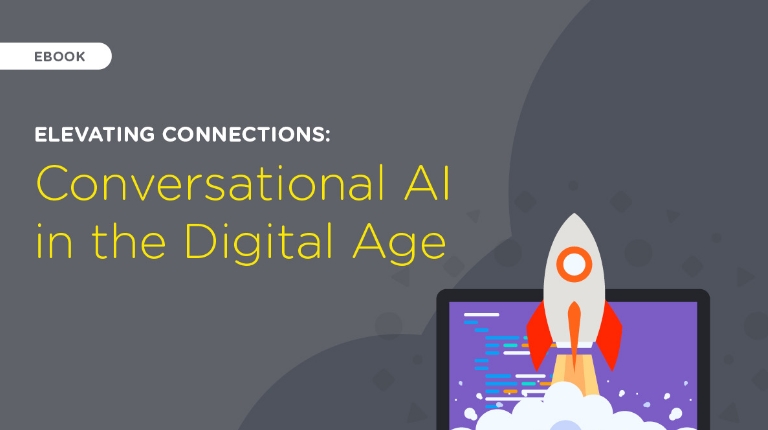
Q: What are some potential drawbacks or risks associated with relying too heavily on technology for customer service: How can organizations mitigate these risks?
JW: One classic example, and one of my pet peeves, is companies who measure the success of their technology using a metric called containment, meaning how many inquiries are contained within their automated platform. A big risk with concentrating on containment is you may build solutions — sometimes inadvertently, maybe sometimes less inadvertently — where one of the outcomes is that people get stuck.
By this measure, that could be considered a good thing. Somebody comes into the automated system and doesn’t come out. By that metric, the interaction is a success. To mitigate this risk, you want to measure what people are achieving. What are they getting done? And is it getting easier or harder to get certain things done? An example might be how many passwords are reset in the automated system or how many payments were processed.
The right metrics are positive, like what is it contributing rather than what is it preventing? The opposite can really frustrate your customers.
The Tipping Point for AI in Customer Interactions
Q: What is the tipping point for full AI integration in contact centers and customer service strategies?
JW: Culturally, the tipping point happens when an AI-based solution becomes either indistinguishable from a human or is fully accepted as if it were a human. This involves both the evolution of the technology and people’s acceptance.
That means that as the capabilities of these systems improve, they will be more and more broadly used, and there’ll be a gradual continued offset of human labor in these processes. You’ll see a gradual shrinking of humans engaged in customer contact operations. Those humans who remain involved will have greater specialization and a greater ability to solve customer needs.
Financially, the tipping point will be easier to spot. It occurs when you make money. Your AI conversion programs suddenly save you more than they cost to develop. You make a net increase in EBITDA from implementing AI. Humans are either excluded or, much better, redirected to higher-priority activities. When that happens, it’s a crossover point.
But to be clear, we don’t see this as the future of contact centers. We see elegant AI-based solutions combined smartly with a human in the loop. Together, this combination delivers the best outcomes for the customer.
